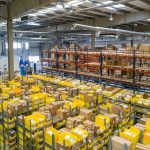When we talk about sustainable textiles, it’s about more than just organic cotton and recycled polyester. The industry is evolving rapidly, with new technologies and innovative materials being developed all the time. The UK is at the forefront of this revolution, leading the way with a number of exciting new innovations.
The Rise of Sustainable Materials in the Textile Industry
The textile industry is a significant contributor to environmental waste. It has been estimated that a staggering 92 million tonnes of textile waste is created globally every year. In the face of such alarming statistics, companies are searching for ways to reduce the environmental impact of their products.
A découvrir également : What Are the Best Eco-Friendly Building Materials for UK Property Developers?
A key part of this is the development and use of sustainable materials. These are fabrics that have a minimal impact on the environment, either because they are made from recycled materials or because they are produced using processes that have a lower carbon footprint.
In the UK, some companies are turning to unexpected sources for these materials. For example, Piñatex is a fabric made from the leaves of the pineapple plant. Not only is this a by-product of the pineapple harvest, meaning no additional resources are used in its production, but it also provides farmers with an additional source of income.
A lire aussi : How to Leverage LinkedIn for B2B Lead Generation in the UK’s Engineering Sector?
Digital Innovation in Textile Manufacturing
The textile industry is not typically associated with the digital world. However, the advent of Industry 4.0 and the Internet of Things is driving a transformation in the way textiles are produced.
Digital technology is being used to optimize production processes, reducing waste and improving efficiency. For instance, digital fabric printing allows for small production runs, meaning companies can produce only what they need and reduce the amount of unsold stock.
In addition, digital tools are used to track and trace materials throughout the supply chain. This provides transparency and ensures that sustainable practices are being followed.
The Role of Bio-based Fabrics in the Future of Fashion
The quest for sustainability is pushing the boundaries of innovation in the textile industry. One area that has shown great promise is the development of bio-based fabrics. These are materials that are derived from living organisms, such as plants or bacteria.
In the UK, companies are exploring the use of these materials in fashion. For instance, Bolt Threads has developed a fabric called Microsilk, which is made from yeast cells that have been genetically engineered to produce silk proteins. Similarly, Modern Meadow is growing leather in a lab, eliminating the need for animal farming.
These materials not only reduce the environmental impact of textile production but also have the potential to revolutionise the fashion industry.
The Impact of New Technologies on Waste Reduction
Technology is playing a significant role in reducing waste in the textile industry. New processes are being developed that can recycle fabrics more effectively, and digital tools are being used to ensure that production aligns more closely with demand, reducing the amount of unsold stock.
One exciting development is the use of chemical recycling. This process breaks down used textiles into their component fibres, which can then be spun into new yarns. Unlike mechanical recycling, which can degrade the quality of the fibres, chemical recycling maintains their strength and quality.
In the UK, companies like Worn Again Technologies are leading the way in this field. Their process can handle a mix of fabrics, including those that are currently difficult to recycle, such as polyester-cotton blends.
The Implications of Sustainable Innovation for the Textile Supply Chain
A sustainable textile industry isn’t just about the fabrics themselves. It’s also about how those fabrics are produced and get to market. Sustainability needs to be embedded throughout the supply chain, from the sourcing of raw materials to the manufacturing process and final delivery.
The use of digital tools is vital in achieving this. Platforms such as Provenance provide transparency in the supply chain, allowing consumers to see exactly where their clothes come from and how they were made. This not only helps to ensure that sustainable practices are being followed, but also builds trust with consumers.
Meanwhile, companies are also looking at how they can reduce the environmental impact of their logistics operations. This might involve using electric vehicles for deliveries, or optimising routes to reduce fuel consumption.
In conclusion, the UK’s textile industry is undergoing a sustainability revolution. From innovative new materials to digital technologies and bio-based fabrics, there are exciting developments happening all the time. These don’t just offer the prospect of a more environmentally friendly industry; they also have the potential to reshape the world of fashion as we know it.
The Pioneering Role of Digital Catapult and University of Leeds in Textile Innovation
When we mention textile innovation in the UK, two names stand out: Digital Catapult and the University of Leeds. Digital Catapult, the UK’s leading advanced digital technology innovation centre, is making significant strides in the sustainability movement. They are working closely with the textile industry to leverage digital technologies like artificial intelligence and Internet of Things to drive efficiency and reduce waste.
The University of Leeds, on the other hand, is renowned for its research in textile technology and sustainability. They are currently experimenting with plant-based and organic materials, with an emphasis on reducing the textile industry’s impact on the environment. For instance, their research team is focusing on transforming organic cotton and other plant-based materials into durable, eco-friendly textiles.
Furthermore, they are pioneering ways to reduce textile waste through innovation. One of their standout projects involves a partnership with Pennine Weavers and Future Fashion Factory. Together, they are developing technology that can recycle or upcycle textile waste, contributing to a more circular economy within the fashion industry.
These organisations’ efforts underline the UK’s commitment to sustainable fashion, driving the development of cleaner, greener materials and processes.
Advancements in Textile Recycling and Supply Chain Transparency
Textile recycling has become a critical aspect in the quest for a more sustainable textile industry. Advanced techniques such as chemical recycling, championed by companies like Worn Again Technologies, are transforming how the industry deals with waste. These processes maintain the quality of the fibres, giving them a new lease on life and reducing the need for virgin materials.
The supply chain, on the other hand, is just as important. Transparency in supply chains is a vital part of sustainable fashion. With digital supply chain hubs, consumers can trace the origin of their clothes, bolstering their confidence in the brands they support.
Working with platforms like Provenance, companies are now providing consumers with comprehensive details about their products – from the raw materials used to the manufacturing and delivery processes. This level of transparency not only promotes ethical and sustainable practices but also strengthens the bond between brands and consumers.
In conclusion, the UK is proving itself as a powerhouse in sustainable textile innovation. From the use of surprising materials like pineapple leaves to advancements in recycling technologies, the UK is setting the pace for a greener future in fashion. Moreover, with the integration of digital technologies, the textile industry is seeing improved efficiency and transparency, making sustainability an achievable goal. The implications of these innovations extend beyond just an eco-friendly industry, they are shaping the future of fashion itself.











